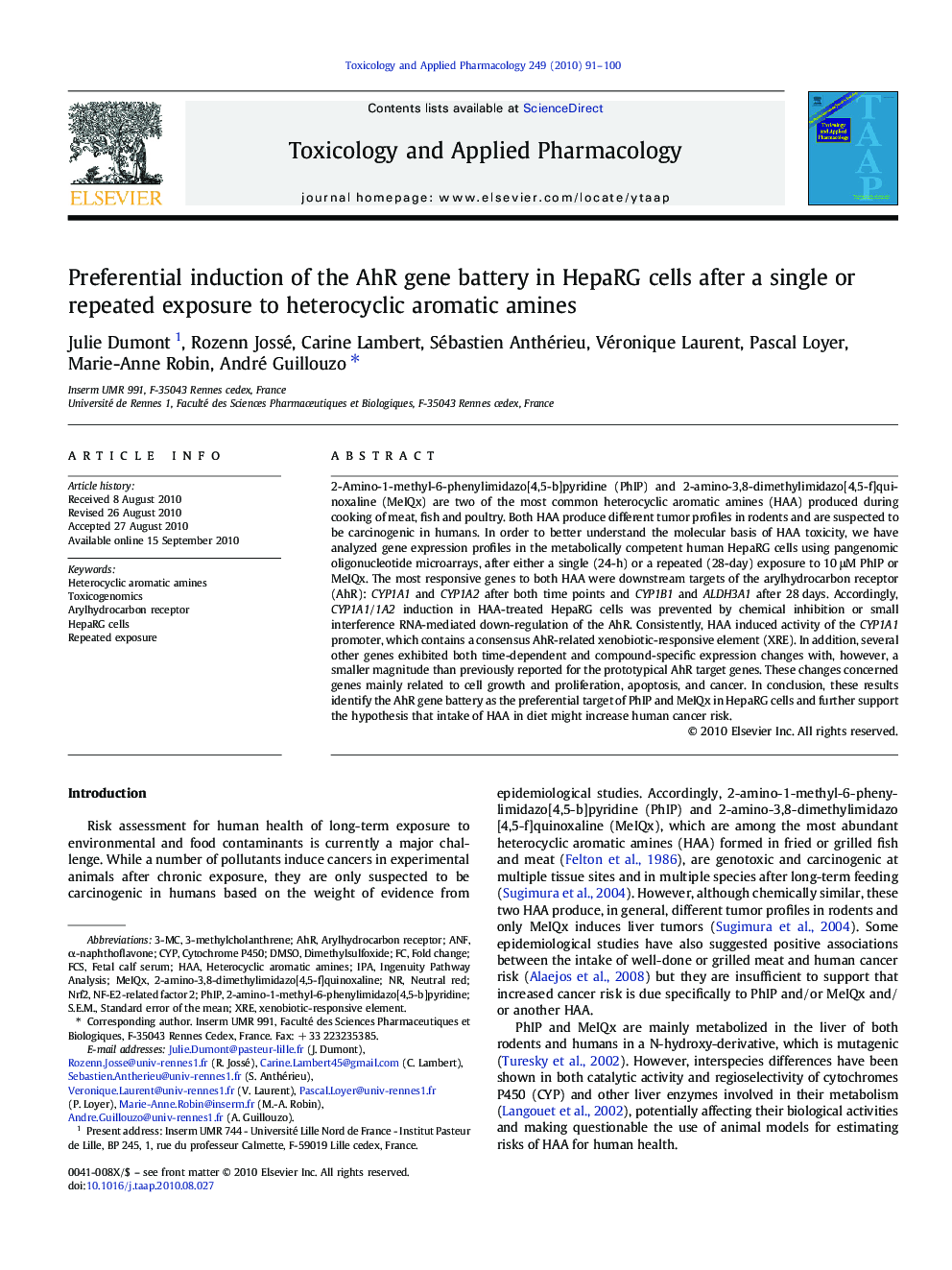| کد مقاله | کد نشریه | سال انتشار | مقاله انگلیسی | نسخه تمام متن |
|---|---|---|---|---|
| 2570041 | 1128564 | 2010 | 10 صفحه PDF | دانلود رایگان |

2-Amino-1-methyl-6-phenylimidazo[4,5-b]pyridine (PhIP) and 2-amino-3,8-dimethylimidazo[4,5-f]quinoxaline (MeIQx) are two of the most common heterocyclic aromatic amines (HAA) produced during cooking of meat, fish and poultry. Both HAA produce different tumor profiles in rodents and are suspected to be carcinogenic in humans. In order to better understand the molecular basis of HAA toxicity, we have analyzed gene expression profiles in the metabolically competent human HepaRG cells using pangenomic oligonucleotide microarrays, after either a single (24-h) or a repeated (28-day) exposure to 10 μM PhIP or MeIQx. The most responsive genes to both HAA were downstream targets of the arylhydrocarbon receptor (AhR): CYP1A1 and CYP1A2 after both time points and CYP1B1 and ALDH3A1 after 28 days. Accordingly, CYP1A1/1A2 induction in HAA-treated HepaRG cells was prevented by chemical inhibition or small interference RNA-mediated down-regulation of the AhR. Consistently, HAA induced activity of the CYP1A1 promoter, which contains a consensus AhR-related xenobiotic-responsive element (XRE). In addition, several other genes exhibited both time-dependent and compound-specific expression changes with, however, a smaller magnitude than previously reported for the prototypical AhR target genes. These changes concerned genes mainly related to cell growth and proliferation, apoptosis, and cancer. In conclusion, these results identify the AhR gene battery as the preferential target of PhIP and MeIQx in HepaRG cells and further support the hypothesis that intake of HAA in diet might increase human cancer risk.
Journal: Toxicology and Applied Pharmacology - Volume 249, Issue 1, 15 November 2010, Pages 91–100